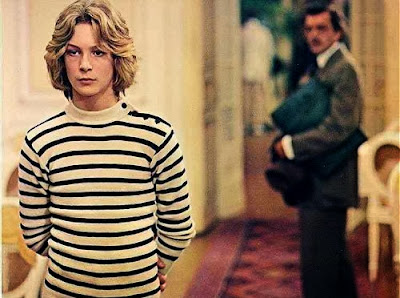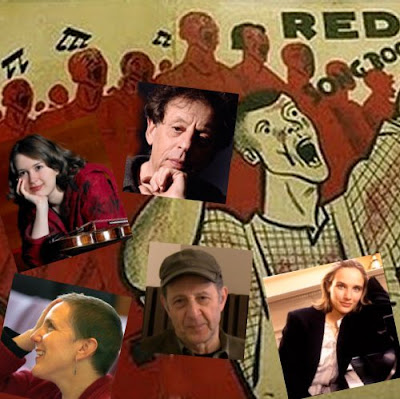Berlin Philharmonic’s cymbal moment of glory
 'In the music critic’s equivalent of a busman’s holiday, I took a night off from reviewing the Proms on Saturday — and watched the concert on BBC TV instead. Even filtered through the tinny speakers of my low-fi telly, it was wonderful: Bruckner’s Seventh Symphony, gloriously played by the Berlin Philharmonic under Sir Simon Rattle.
'In the music critic’s equivalent of a busman’s holiday, I took a night off from reviewing the Proms on Saturday — and watched the concert on BBC TV instead. Even filtered through the tinny speakers of my low-fi telly, it was wonderful: Bruckner’s Seventh Symphony, gloriously played by the Berlin Philharmonic under Sir Simon Rattle.Wonderful, that is, except for one thing. In the entire work the cymbal player has just one moment of glory — a single, mighty clash at the climax of the sublime slow movement. To watch the player sit silently for half an hour, lift his glinting golden discs, prepare himself spiritually and physically for his thrilling entry, hurl the cymbals together with all his might, and then resume his seat and sit imperturbably for the remaining half-hour of the work — this is one of the great concert-hall experiences.
Well, you can guess my complaint. The TV director gave us innumerable close-ups of conductor, strings, brass and woodwind. But the poor old cymbal player’s moment of glory came and went, and he never got on camera! A huge disappointment for connoisseurs. But it’s his mum I really feel sorry for.'
Richard Morrison in good form in today’s Times. The slow movement of that symphony and the cymbal part have a number of resonances. Bruckner is said to have written the solitary cymbal clash into the score when he heard of the death of Wagner, or did he? One source says: 'The biggest issue relating to editions seems to relate to the inclusion of a cymbal clash at the climax of the adagio. This was originally suggested by Nikisch and added to the score but Bruckner seems to have been uncertain about it (although there is no doubt about the inclusion of the clash at the analogous point of the Eighth symphony). The Haas edition does not include the cymbal clash (whereas Nowak does) but some conductors, such as Karajan, have used Haas and then added the clash.'
 The adagio movement gained notoreity when it was broadcast by the German radio (Deutscher Reichsrundfunk) when the news of Hitler's death was announced on May 1, 1945, and there is little doubt that Hitler was associated with Bruckner's music, the photo here shows him standing in front of a bust of the composer in 1937.
The adagio movement gained notoreity when it was broadcast by the German radio (Deutscher Reichsrundfunk) when the news of Hitler's death was announced on May 1, 1945, and there is little doubt that Hitler was associated with Bruckner's music, the photo here shows him standing in front of a bust of the composer in 1937. Which points us rather sadly down An Overgrown Path to the Berlin Philharmonic’s darkest hour.
Image credits - OK I know it's not the Berlin Philharmonic, it's from Tiny Pineapple, Hitler photo from Wikipedia Bruckner entry. Any copyrighted material on these pages is included for "fair use", for the purpose of study, review or critical analysis only, and will be removed at the request of copyright owner(s). Report broken links, missing images and other errors to - overgrownpath at hotmail dot co dot uk









Comments
"Hitler before the bust of Bruckner at Walhalla, 1937."
And here is a full interior photo of Walhalla for those readers who have not yet visited it:
http://rubens.anu.edu.au/htdocs/bycountry/germany/regensburg/valhalla/652.JPG
Also:
http://www.walhalla-regensburg.de/deutsch/index.shtml
rubens.anu.edu.au/.../valhalla/index.html
*
Dramatist and composer Richard Wagner visited König Ludwig I's Walhalla during its construction of, I believe, 1830 to 1842.
König Ludwig I declared that Walhalla would honor women, as well as men.
The 21-year old Munich anti-Nazi activist Sophia Magdalena Scholl was the most recent addition, added in 2003. (She and her brother Hans are the subject of Udo Zimmermann's chamber opera, The White Rose, recorded on Orfeo.)
Only persons who are dead for at least 20 years are eligible for Walhalla. Proposals can be made by anybody; the government of Bavaria decides on additions. Only 31 busts were added since on an irregular basis, for a total of 191 of which 12 are female. The most recent additions are/will be:
1990 Albert Einstein
1998 Sister Gerhardinger
1999 Konrad Adenauer
2000 Johannes Brahms
2003 Sophie Magdalena Scholl
2007 Carl Friedrich Gauß
2008 Edith Stein
2009 Heinrich Heine
Source: http://en.wikipedia.org/wiki/Walhalla_temple
And on the subject of balance. I spent quite a lot of time searching for a photo of Tony Blair or George Bush standing in front of a bust of Bruckner (or any other classical composer) for that article, but failed.
I also think that in a little over two years time both Tony Blair and George Bush could begin their penance for the destruction they caused by standing together, silently, before the marble bust of Johannes Brahms -- added to Walhalla in 2000 in a definite Millennium gesture.
But first they would need to listen to some classical music.
...
Now get back to your holiday!